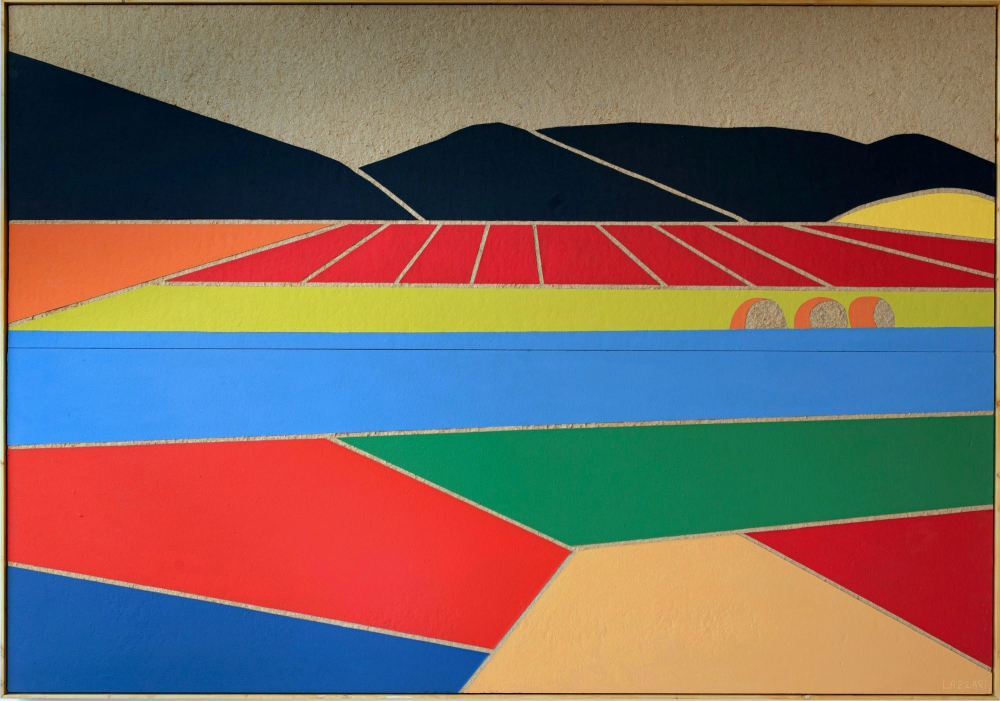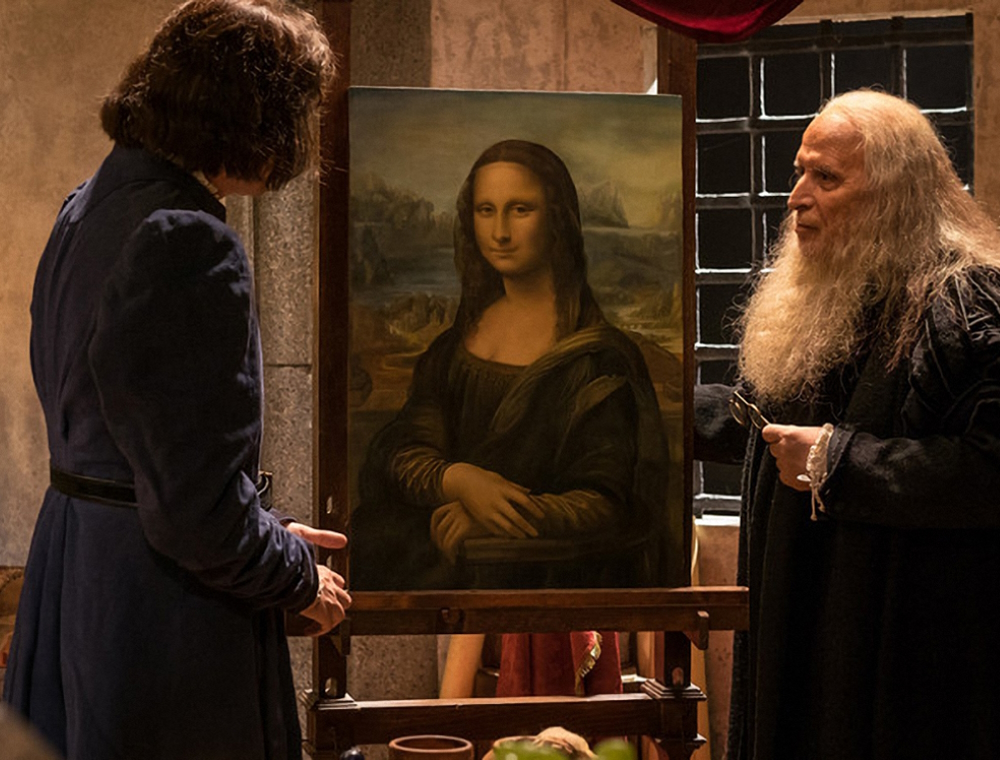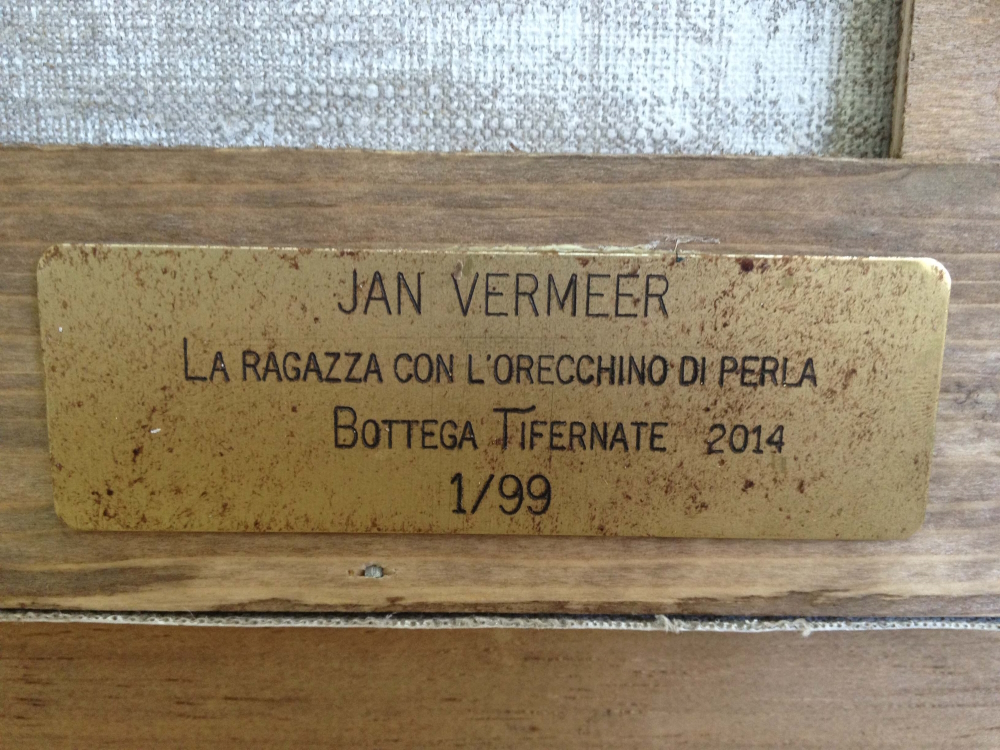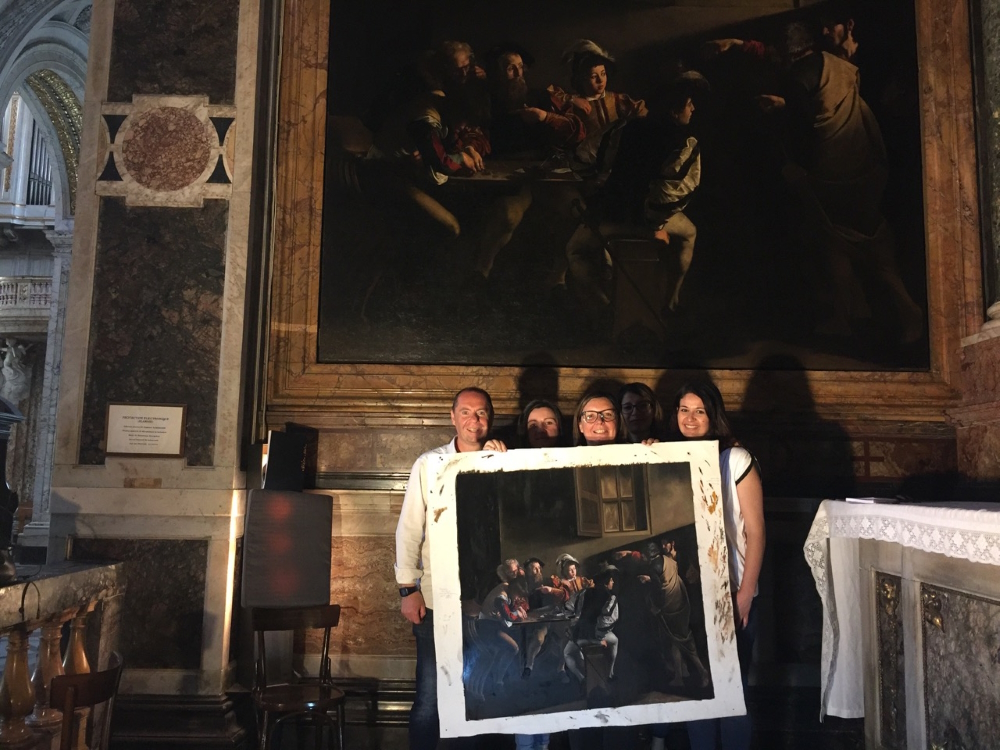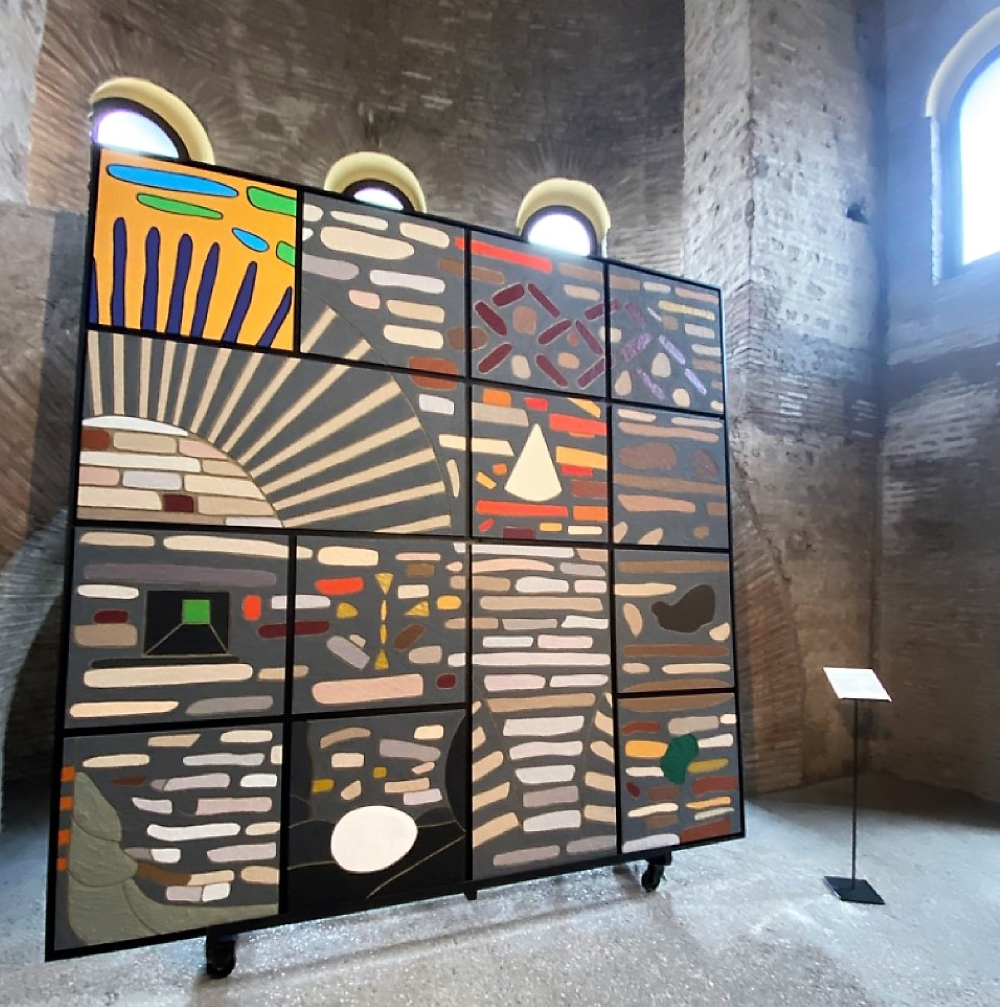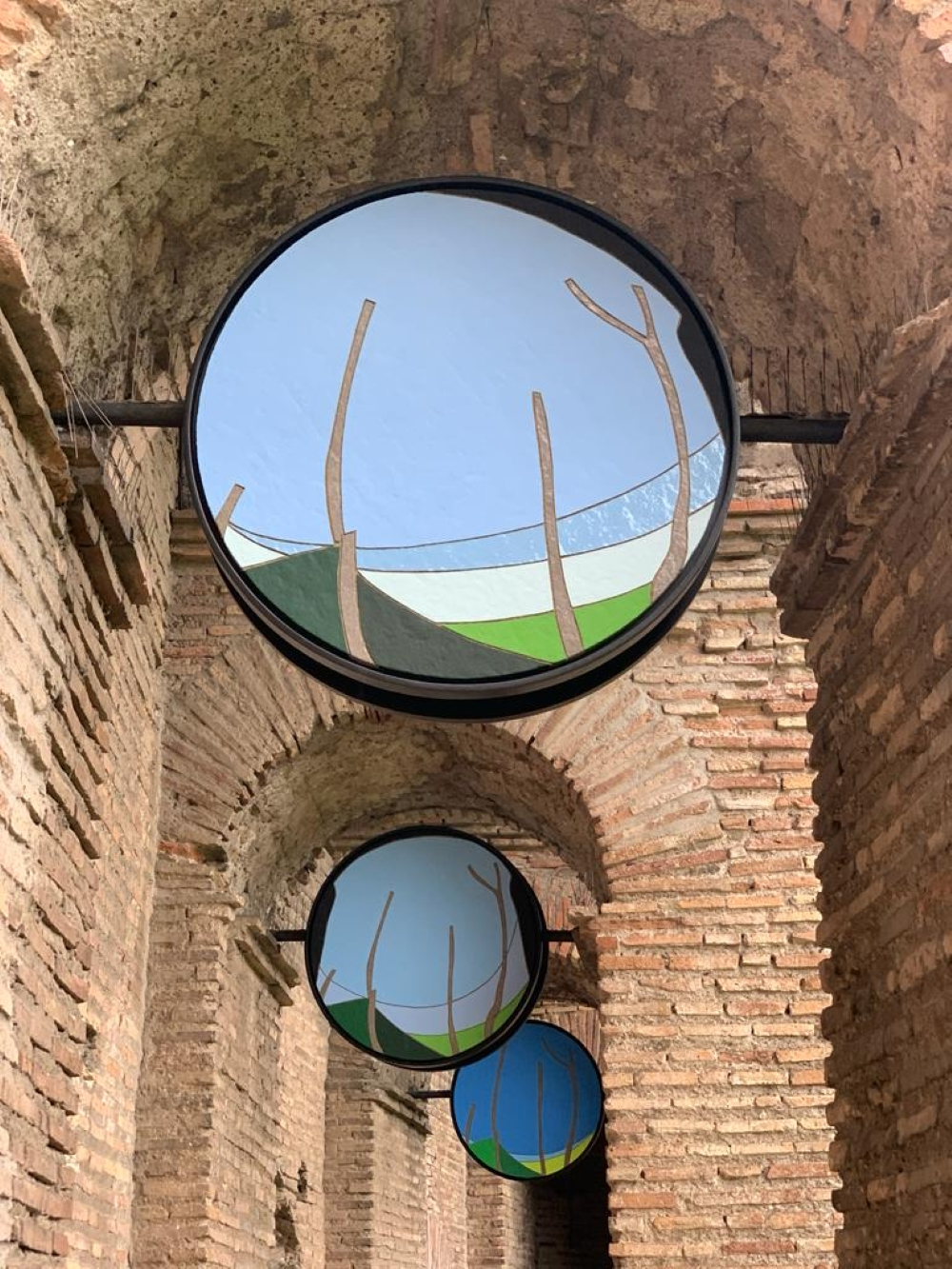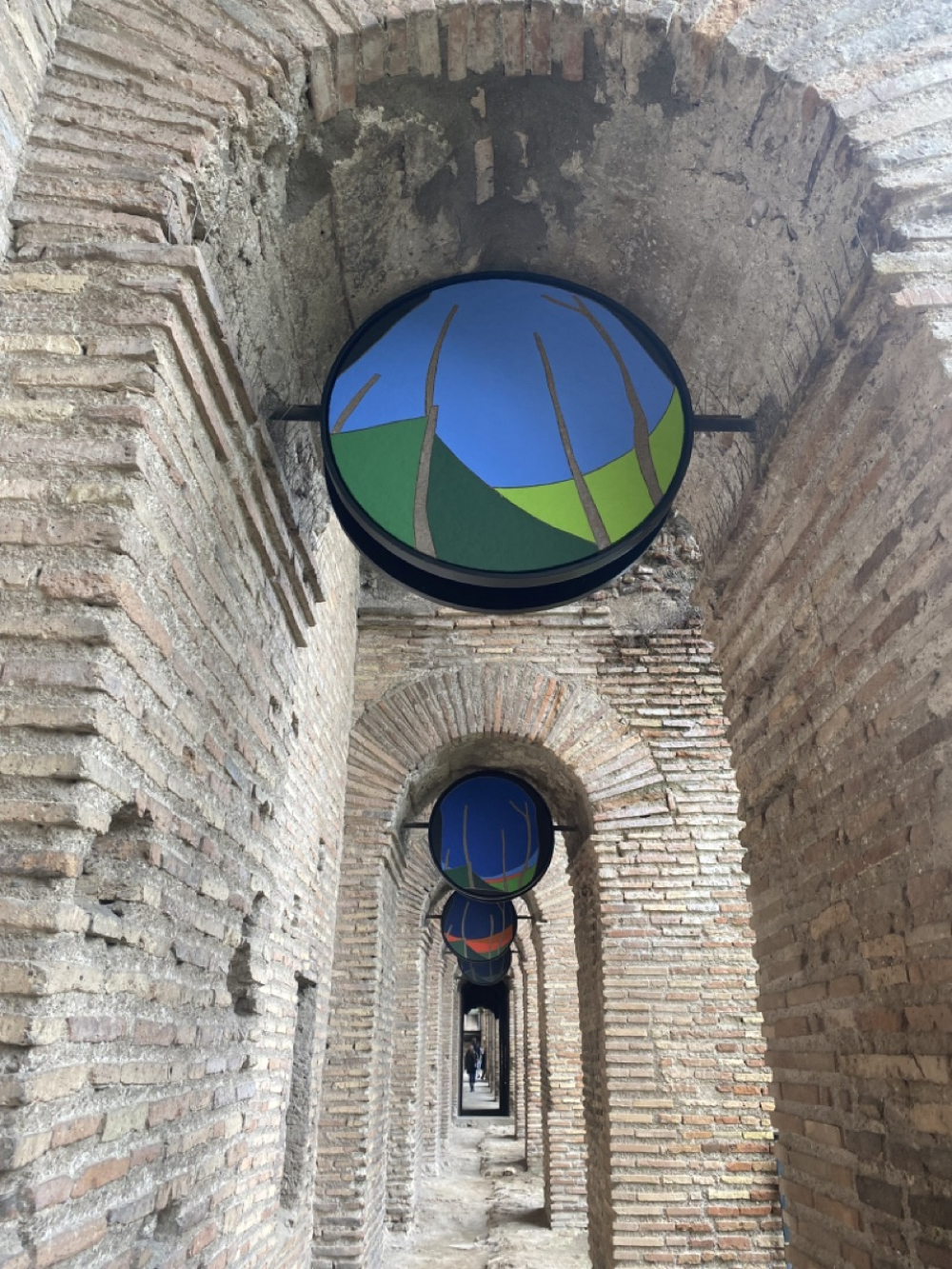Stefano Lazzari
painter and founder of the renowned Pictography technique
Italy
King Charles III was presented one on the occasion of his coronation and Pope Francis received one too: a painting that is a reproduction identical to the original which was created a few hundred years ago. These artworks are handmade by an Italian and his staff thanks to his patented invention. That is a processing method that guarantees excellence and authenticity. It is approved by the Ministry of Cultural Heritage, which allows 1:1 copies of any ancient masterpiece. This unique technique that literally follows the original way of execution regarding paint, brushstrokes and finish secures the company constant collaborations with renowned art institutions like the Louvre, the Metropolitan Museum, the Vatican Museum, Uffizi Gallery or the British Museum and is even used on film sets. But besides being ‚the king of copyright copies‘ (altotevereoggi.it) the co-founder is an artist in his own right creating timeless, very classical, but also modern paintings – an activitiy that he hid for long!
Stefano Lazzari
painter and founder of the renowned Pictography technique
Italy

It was the legendary Mona Lisa who opened all doors for him. But until that time came, many years and a lot of research passed by for Stefano Lazzari. The native Italian (* 1971 in Città di Castello, Umbria) graduated from I.T.I.S. (State Industrial Technical Institute) as a computer scientist in 1990. His passion for art led him to self-taught research into ancient painting techniques for the recreation of works on fresco, canvas and wood. He studied the original paintings of the past‘s greatest artists, located in museums or private collections. Contacts to competent art critics, restorers and museum directors allowed him to obtain knowledge of the chemistry of colour as well as learning recipes and methods of working secrets no longer known. His relationship with the best restorers also educated him on the errors of the paintings‘ workmanship that emerged after centuries of exposure to environmental stress.
With the multifaceted background in mind the explorer developed something called Pictography and had it patented in 2000. It‘s a processing method that is renewed day after day still. It was invented in hinsight of reproducing any painting with scientific methodology, through the use of materials and recipes utalized for the original, whether from the Roman era or from the 1900s, with the ability to replicate the exact aesthetic quality and guarantee the same duration over time. To prove the invention’s unique selling point the archetypal masterpiece of the Italian Renaissance was chosen: the world famous painting by Leonardo Da Vinci. The reproduction of Mona Lisa was executed inhouse by the experts of Bottega Tifernate with loving attention to detail. The company that Signore Lazzari had set up with his father and sister in 1995 met the expectations. It was fully in tune with the firm’s concern „recreating the pathos that one experiences in front of the original“.
Since then the creative laboratory in his hometown that represents the highest quality of craftsmanship and consists of painters, chisellers as well as carvers is in international demand. The requests from official authorities and private individuals are varied: the Central Institute for Restoration (ICR, Rome), recognised Pictography as the best technique in the world for the reproduction on fresco of the fragments that collapsed in the vault of the Basilica of Assisi due to the due to the earthquake. Florence‘s four stars Relais Hotel Centrale placed an order for the reproductions of 1400-1500 original paintings in Renaissance style plus modern paintings for common spaces. For Rome’s Leonardo da Vinci Experience museum 23 works of the visionary master had to be recreated in the 1:1 format and processed like the original. And then there are commisoned works for tv like the first documentary film on Raffaello (‚Raphael, the Lord of the Arts‘) and or on ‚Michelangelo – Infinito/Endless‘ for Sky Arte respectively Sky Studios Italy. These productions were a perfect possibility for Tornatore Francesco Frigeri, the master of set design, to judge Pictography as "the best technique in the world to recreate paintings for use on film sets“. A different positive aspect noted art critic Vittorio Sgarbi: "Pictography offers an important service to the world of art, since it makes it possible to bring together in a single room works scattered in several parts of the world so that scholars can examine them all at once.“
Despite the fact that Stefano Lazzari’s main concern is the daily business of Bottega Tifernate it shouldn’t overshadow his very personal artistic activities. 2022/23 he hosted the first ever exhibition at the special setting of Rome‘s Museo delle Mura. On the occasion of this „great success with the public“, altotevereoggi.it wrote about his two series of paintings, eight roundels and a polyptych of fourteen elements (all tempera on panel): „Lazzari's idea is that of a 'return to form' with the use of essential lines and curves that, with the help of colour, make it possible to recreate the suggestion that a flowery landscape or the intimacy of a sacred portrait provokes, without distractions. There are strong references in his works to the later works of Alberto Burri (Italian visual artist, who „was associated with the materialism of the European informal art movement“, Wikipedia), especially the figurative compositions,[...] from which Lazzari draws the rigour of form, technique and pure colour fields [...]. As he says: ‚I see in my paintings a continuous contamination and reuse of ancient techniques on modern materials, lines and shapes inspired by great masterpieces but also the scent and colours, the landscape of our land."
Stefano Lazzari is married. He lives and works in Città di Castello, Italy.
Interview May 2023
From past to present: balancing between reproduction-biz and personal artistic self-realization
INTUITION/IMAGINATION
?: How does intuition present itself to you – in form of a suspicious impression, a spontaneous visualisation or whatever - maybe in dreams?
My creations are based on emotions, feelings, often in dreams.
?: Will any ideas be written down immediately and archived?
I often wake up in the middle of the night with an insight and have to immediately jot it down in my notebook, which I always carry with me. I can't plan the ideas; they come at all sorts of times. When they come, I have to immediately jot them down, to develop them later.
?: How do you come up with good or extraordinary ideas?
The best ideas come at happy times in my life, on occasions when I am very happy enough to be exalted.
?: Do you feel that new creative ideas come as a whole or do you get like a little seed of inspiration that evolves into something else and has to be realized by endless trials and errors in form of constant developments until the final result?
Creative ideas come instinctively but are also formed through work and life experiences.
I believe that the best lessons come from mistakes and defeats.
?: What if there is a deadline, but no intuition? Does the first fuel the latter maybe?
Perhaps this is the hardest part of reconciling art and business. Deadline is contrary to inspiration. You need a system of thinking that circumvents this problem. When faced with a project, I try not to think about the deadline but only about its progress, and like magic, you always manage to be on time.
INSPIRATION
?: What inspires you and how do you stimulate this special form of imaginativeness?
I live in the Upper Tiber Valley, where Renaissance art developed. Raphael, Perugino, Piero della Francesca, Michelangelo were born and worked in the places where I live. You can feel and see this greatness and beauty. The landscape around me, the forests of the Apennines, the fields in bloom, the colors...are continuous stimulus for my art.
?: How do you filter between ideas that are worthwhile pursuing and bad ones that you just let go of?
There is no filter but rather intuition. I decide by instinct what I want to carry forward from what I want to discard. If after a day, a week or 10 days, I look at a sketch and feel no emotion, then I decide to discard it.
?: Does an idea need to appeal to you primarily or is its commercial potential an essential factor?
I accomplish what I like.
I have nearly always found approval from my clients. Rather, before I start, I try to understand what my client wants and try to investigate his soul to understand what makes him excited, his tastes, his hobbies, his life.
?: Do you revisit old ideas or check what colleagues or competitors are up to at times?
I have never checked my colleagues. I do not consider the word competition in my life. The world is big enough to accommodate everyone's ideas. Rather, I focus on myself so that I can create paintings that make my emotions understood. In fact, my idea is that even a child can see what I see, with his (innocent) eyes.
CREATIVITY
?: What time or environment best suits your creative work process — for example, a time and place of tranquility or of pressure? Which path do you take from theory or idea to creation?
There is no such thing as a suitable time for creativity. Sometimes I work at night, sometimes in the middle of the day.
I created an atelier within my workshop where, immersed in my paintings, I can draw, create, and think.
The environment that most inspires me is a place I call "my refuge" in the Apennines, which is difficult to reach by car: I spend a great deal of my time there.
?: What’s better in the realization process — for example, speed and forcing creativity by grasping the magic of the moment or a slow, ripening process for implementation and elaboration?
Both. Knowing how to grasp intuition at the moment of its greatest strength is essential. Then it takes days, sometimes months to make visible on a panel, canvas or fresco that feeling so intimate, personal and very often irrational.
?: Do you have any specific strategies you use when you're feeling stuck creatively?
Yes, I stop thinking and live as I always do. I cannot feel the urgency or panic of not being able to do something or get it done in time. With time, inspiration returns. For me, the main thing is to be serene and calm.
?: How important are self-doubt and criticism by others during such a process?
I always have doubts about myself. I would like to know more things, travel more, have fewer limitations... I welcome criticism that I consider competent with great care and, often, it teaches me something positive, both about my attitude toward others and toward myself. Criticism that I consider irrelevant does not arouse me any emotion/reaction.
?: Is it better to be creative on your own, to trust only your own instincts, or to work in a team?
My inspiration cannot be shared. It is mine alone. I cannot make it rational. I rely a lot on my instinct.
For the physical realization of my ideas, I make use of my work team that I have trained and by now knows my working method.
?: Should a creative person always stay true to him- or herself, including taking risks and going against the flow, or must the person, for reasons of commercial survival, make concessions to the demands of the market, the wishes of clients and the audience’s expectations?
Even in the most difficult times, I have never bowed to the fashions of the moment. Rather, I look for clients who can understand and appreciate my work.
?: How are innovation and improvement possible if you’ve established a distinctive style? Is it good to be ahead of your time, even if you hazard not being understood?
Innovation lies in grasping life. It itself makes you see how customs, habits change. Living among young people, understanding their needs and desires is already a great stimulus. Getting to know new places with local customs and traditions is a great stimulus too that leads to experimenting with new materials, colors, creating new forms...
?: When does the time come to end the creative process, to be content and set the final result free? Or is it always a work-in-progress, with an endless possibility of improvement?
The end of a creative process allows you to analyze how you arrived at that result. Seeing how the client receives it is also very helpful. Going back through the whole creative cycle, even in cases of a not entirely exciting result, is part of a path of growth and enhances the experience that also helps develop the irrational part and the creative instinct.
?: In case of failure or, worse, a creativity crisis how do you get out of such a hole?
I experienced some setbacks due to creative crisis when I took a commission for a work that I did not like. In this case I had the courage to talk about it with my client who understood took a different path.
I am not interested in success or making money at all costs; I respect my own pace and needs very much.
SUCCESS
?: “Success is the ability to go from one failure to another with no loss of enthusiasm.“ Do you agree with Winston Churchill’s quote?
I consider it essential. At 51, I feel the same as when I started in 1990 to create my works. In fact, it is even more exhilarating to achieve success after so many falls and so many sacrifices.
I feel lucky that after 33 years of my career, I can still get excited listening to a song or in front of a landscape, a flower, a scent a color...
?: Should or can you resist the temptation to recycle a ‘formula’ you're successful with?
I don't pose the problem: once we achieve success, we set new goals. There is no formula, rather a way of standing in front of a project: creativity, positivity, humility.
?: Is it desirable to create an ultimate or timeless work? Doesn’t “top of the ladder” bring up the question, “What’s next?” — that is, isn’t such a personal peak “the end”?
I think a lot about this: is there the perfect work or the "life's work"? After reaching so many milestones, I can say: no, there is no such thing as the ultimate, timeless work. Everything is questionable and everything is surmountable. It is the experience of life that always teaches us new things and makes you set new goals. It is beautiful to live like this...
MY FAVORITE WORK:
The work that will always remain in my heart is: Castelluccio No. 1, Fields in bloom in the Sibillini Mountains.
As a personal experience, the meeting in 2018 with Pope Francis during the delivery of a work for Casa The moment he shook my hand and thanked me for a painting that moved him, I felt repaid for so many injustices suffered, setbacks and sacrifices. I said to myself "Stefano you must always be positive and love, love, love. Only then you can be happy..."
